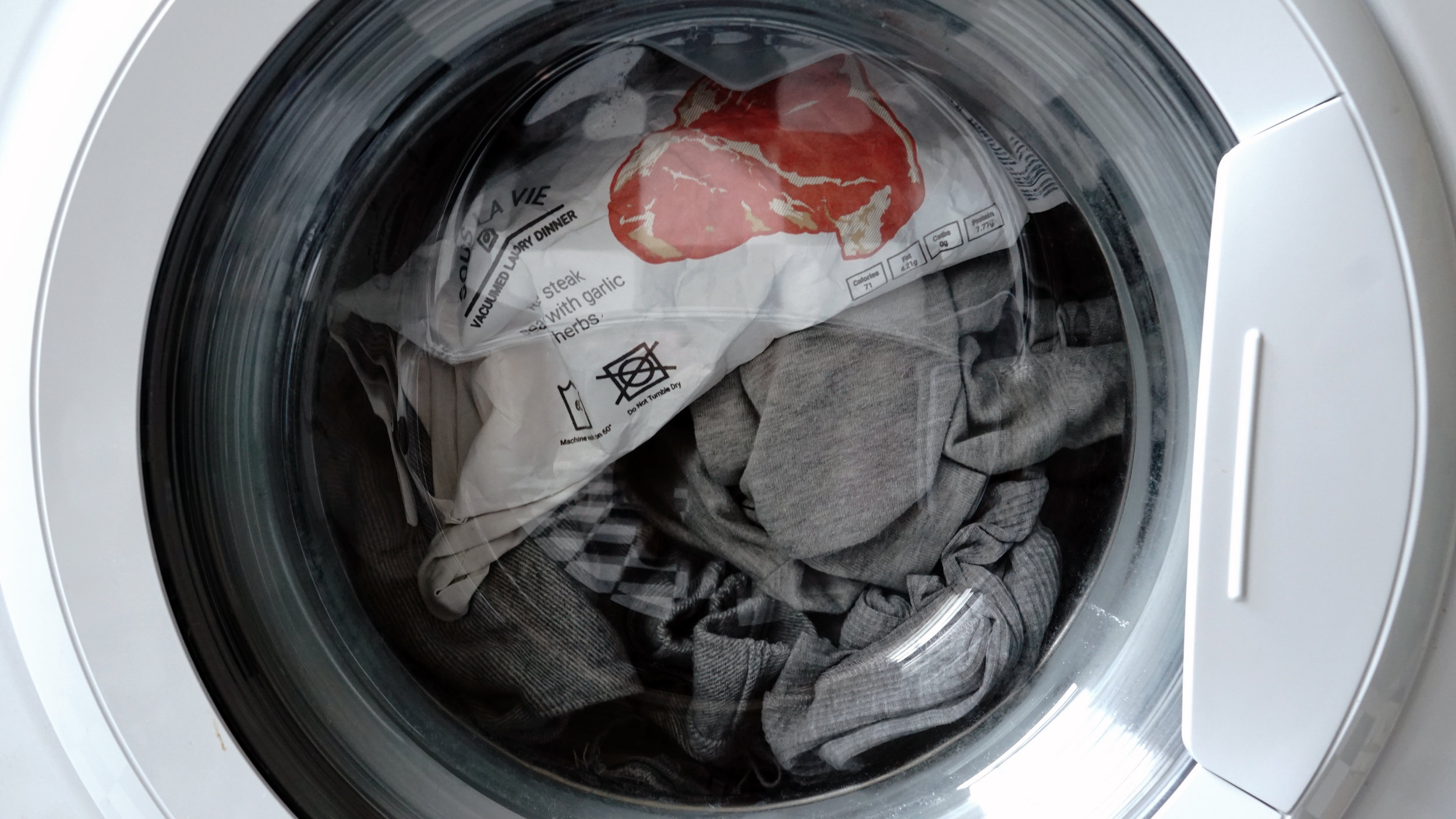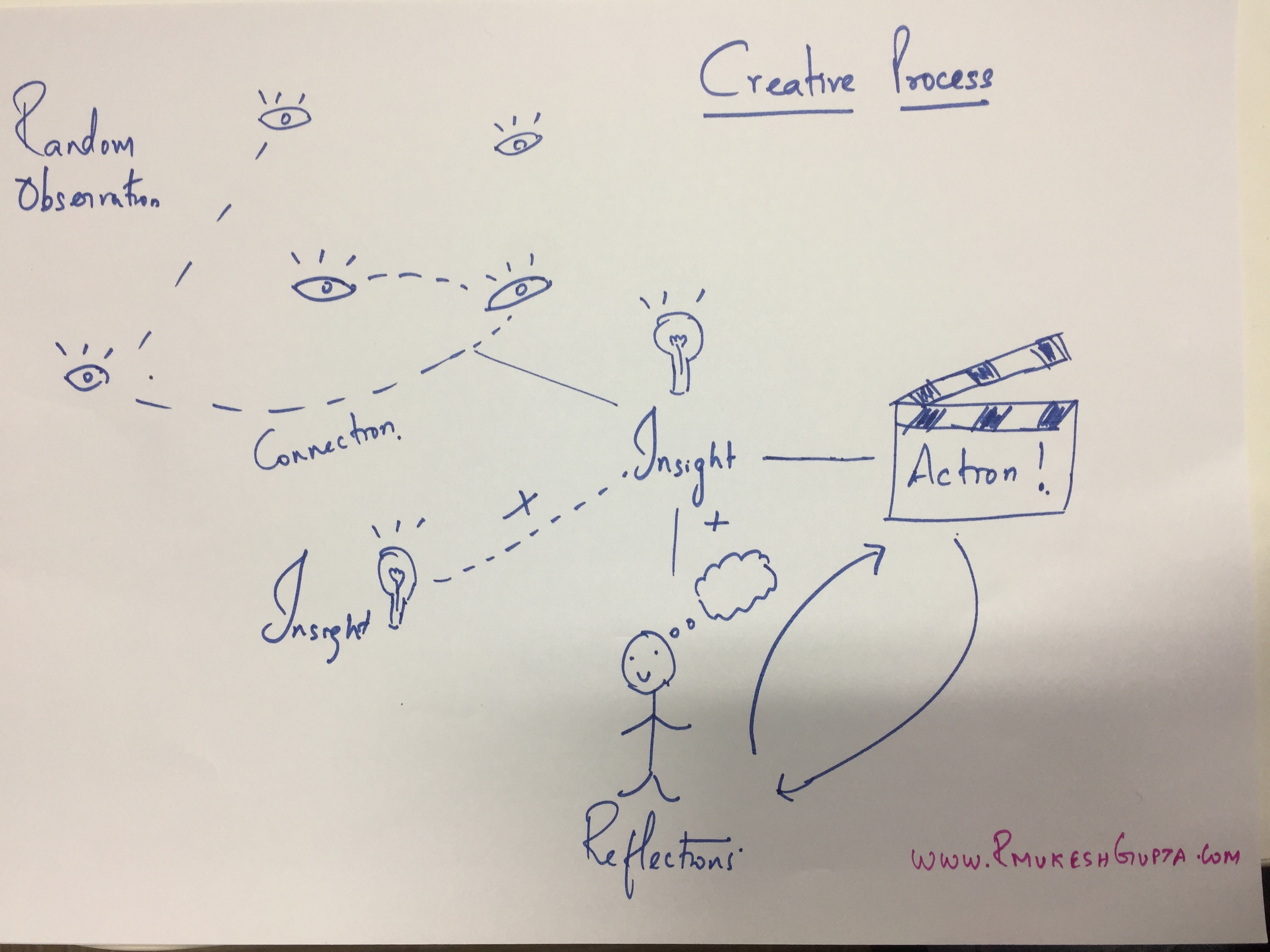Today, I came across two extremely creative ideas, that made me think about creativity and how do we get creative ideas. What follows is my take on how we become and stay creative.
First, lets look at the creative ideas that inspired this post.
Idea 1: Iftach Gazit’s Sous La Vie bags cook meals in the washing machine.
 Cooking Food & Washing Clothes
Cooking Food & Washing Clothes
Designer Iftach Gazit has created a paper bag which can cook food in a washing machine, alongside the clothes that are being washed as well. Gazit’s bags are made from waterproof Tyvek paper, which keeps the food soap-free. They have an inner sealed plastic bag to stop leaks. The cooking uses high-end french cooking method called Sous Vide (which means under vacuum). On his website, he talks about the different ideas that colluded to bring this idea to life:
- The culture of TV Dinner. When families have ready-to-eat dinner, cooked in a micro-wave (if cooked at all) and eat it in front of TV instead of together on a dining table.
- Sous Vide: The high-end french method of cooking food, which requires that you cook the food for long durations and in medium heat, so that the food is evenly cooked.
- The proliferation of homeless people in America, who in the night come together near the 24 hour laundromats as a safe haven.
- The availability of washing machines but no food to feed to these people. The feature of washing machine to simulate medium hot water for long periods of time.
- The availability of technology of Tyvek Paper, which is not soluble in water.
Iftach was able to combine together each one of these insights in a way that was unique to him to deliver a product that could cook high quality food using technology readily available across the country. The only thing that still needs to be done is for someone to ensure that the product he created actually reaches these countless homeless people.
Idea 2: Matthew Mazzotta’s Cloud House receives a rain shower when occupied
This idea is as brilliant if not more than the paper bag that can cook food in a washing machine. This is a home, with its very own private cloud and it rains every time someone steps in and sits in one of the chairs. This home is designed such that as long as it rains naturally and water gets accumulated in the water storage tank below, you could enjoy the rain anytime you visit the house.
On his website, Matthew says the following about the cloud house.
A unique rain harvesting system that creatively reuses the rainwater it collects to provide a deeper look into the natural systems that give us the food we eat. It is a sensory experience that amplifies the connection between our existence and the natural world
He has again combined a lot of simple observations and created a creative concept:
- Almost all of us love the feeling of sitting under a tin roof and listening to the sound that the rain water drops make when they fall on the tin roof.
- Almost all of us understand the importance of rain water harvesting.
- It is important for all of us to understand and respect the water cycle.
- All of us enjoy a uniquely creative experience.
He put together all of these and created a unique product that is creative and yet productive.
So, based on these two examples and countless others that i have seen, read about and come up myself, I believe that the creative process works something like the following:
Observation:
Almost everyone who wants to be a creative or who creates stuff is always a great observer. They don’t just look at things. They observe things. Looking is a passive job. Observing is an active job. When you observe, you are curious and are thinking about stuff. You notice things that we otherwise miss when we just look at stuff. These observations are the most fundamental aspects of being creative. They are like sounds of a language.
Reflection:
Creative people are also known to be reflective people. They are constantly reflecting about what they observe. It is this reflection that enables them to take two completely random observations and connect or combine them to see what that results in. This is a innately human trait, the ability to look at different observations and imagine how they are connected or what would happen if they are combined together. Without reflection, there is very little creativity. They are like the alphabets of a language.
Connection:
The next step in the creative process is when you connect these observations to one another. These connections can happen subconsciously or can be made consciously by intent. When the connection happens subconsciously, it is a Eureka moment. When it happens consciously, it’s a creative moment. It is this connection that causes insights. These connections are like words in a language. They mean something by themselves but also have the capability to come together and form sentences that are much more meaningful.
Insights:
Each one of these connections provides us with an insight, an insight about what is happening and how stuff are connected to each other. When more than one of these insights come together is when ideas take shape. These ideas are the sentences or paragraphs or poetry in a language. They can be beautiful or crude, depending upon how they are put together.
Action:
Once we have an idea doesn’t mean that the creative process is complete. Creativity is an active form of engagement. Creativity happens when we take action on the ideas that the combination of insights gave us. Once we act on the idea, we reflect again to see if the idea is beautiful or crude. Then comes the hard work of transforming the creative or a crude idea into a work of art. This is like editing a piece of prose or poetry to make it more meaningful, coherent and beautiful.
Repeat:
Being creative is a state of mind. It never stops. You continue to create. You repeat the process to come up with a new set of connections, which lead to a new set of insights, which when combined leads to a new set of ideas, which when acted upon leads to a new creative project and the process continues.
Conclusion:
As you can see the process of being creative can not start without being observant. The more observations we have from the world around us, the better our chances are to combine them in a unique way to come up with unique insights, ideas and projects.
to be creative is the Ability to observe, reflect on the observations, make meaningful connections… Click To Tweet
These skills can not only be learnt but we don’t even have to go anywhere to learn them. They are innately human and all we need to do is to be intentional about them. They are like our muscles, the more we exercise them, the stronger they become – the only difference being, there is no limit to how strong your creative abilities can become.




